One of the oddities of our era is that cars are getting bigger – and heavier – but engines are getting smaller.
It’s because the government hasn’t – yet – mandated the downsizing of cars. On the other hand, it has mandated the downsizing of engines – effectively – via ever-upticking Corporate Average Fuel Economy (CAFE) standards that the car companies have to figure out how to meet or get socked with “gas guzzler” penalties.
These get tacked on to the price of the cars that didn’t make the cut – currently 34.1 MPG on average and headed for 54.5 MPG – which makes those cars harder to sell.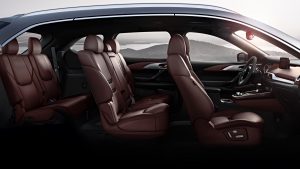
So the problem becomes: How to build the large cars people want while achieving the fuel efficiency the government demands?
The answer is: Build small engines that still make the power – and deliver the performance – of a larger engine.
By turbocharging them.
That’s why you’ll find nothing larger than 2.5 liters under the hood of the Mazda CX-9, a seven-passenger/three row crossover. Two or three years ago, a V6 would have been mandatory in a vehicle this size – and weight.
Anything less would have been like expecting Ryan Seacrest to bench 300 pounds.
But the turbo acts like on-call steroids, turning Ryan Seacrest – that 2.5 liter engine – into Hugh Jackman whenever you need him.
WHAT IT IS
The CX-9 is a three-row/seven passenger crossover SUV -in the same general class as rivals like the Honda Pilot, GMC Acadia, Ford Explorer and Hyundai Sante Fe, among others.
Though vehicles in this class are necessarily utilitarian, Mazda tried hard to make the CX-9 appealing on other levels as well. That’s a task right up there with making a refrigerator sexy – but it’s been done.
And here, again.
The CX-9 looks a lot like a Mazda6 sedan – and that’s a good look. It’s gorgeous inside, too. Almost too nice for a family mobile.
Base price is $32,130 for a FWD Sport trim; adding all-wheel-drive bumps the MSRP to $33,930. There are are also Touring and Gran Touring trims, with the range topping out at $44,315 for a Signature trim with AWD and luxury-class amenities, including real Rosewood trim plates and premium leather upholstery.
WHAT’S NEW
All trims, including the base Sport trim, now come standard with Mazda’s G-Vectoring Control, which enhances handling during high speed cornering by discreetly modulating the engine’s power output.
The already more-fun-to-drive-than-most CX-9 is even more fun-to-drive now.
The formerly optional Blind Spot Monitor is now standard equipment in all trims as well.
No real performance penalty as a result of the government-mandated engine downsizing – and Mazda’s brilliant engineering.
About the same room in all its rows for people as rivals offer in theirs.
Cabin design – and standard/available amenities – compare well to higher-priced luxury-badge crossover SUVs from brands like Audi, Lexus, Infiniti and Acura.
If a ‘fridge can be sexy . . .
Not as utilitarian as others in the class; maximum cargo capacity is less than most.
Floating iPad-style infotainment system is gorgeous looking but could be made easier to use.
Good luck finding the 12V power point (hint, root around the passenger side footwell).
It’s alarming at first read.
The 4,054 pound, seven-passenger CX-9 has an engine only slightly larger than the 2,332 pound, two-seater Miata’s:
Just 2.5 liters vs. 2.0 liters.
About the same engine – size-wise – in a vehicle more than twice as large and as almost twice as heavy.
This does not sound good.
But, the CX-9’s engine is turbocharged (almost 18 pounds of boost) and high compression (10.5:1) on top of that. In addition to the usual wastegate to relieve boost pressure, Mazda engineers use ports within the turbocharger to vary the exhaust pressure fed to the turbo – much in the same way that you use your thumb to increase or decrease the force of the water coming out of a garden hose – along with timed scavenging of the exhaust pulses coming out of each cylinder – to make high boost and high-compression work together. Usually, turbocharged engines have to have lower compression, to accommodate the build-up of cylinder pressure applied by the turbo when it is providing boost. 
This is Mazda’s SkyActiv-G system and it works exactly like feeding Ryan Seacrest steroids through a funnel, like you would a Goose destined for pate de foie gras. The high compression provides excellent responsiveness and power off boost but when boost is applied, power swells to 250 hp and 310 ft.-lbs. of torque and the only catch is you have to feed it premium (high octane) unleaded because high-compression, turbo-boosted engines crave that as much as plants crave Brawndo.
If you feed it regular, the computer will sense the lower octane, dial back the boost and the power will dip to 227 hp.
Regardless, Mazda has made some sweet lemonade out of Uncle’s lemons.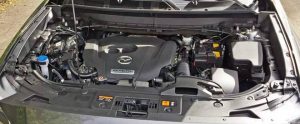
The four cylinder-powered CX-9 is actually quicker than the old/V6-powered CX-9 and it uses less gas.
A lot less gas.
The current CX-9 takes about 7.3 seconds to get to 60 vs. 7.5 for the previous CX, despite the latter having a much larger and stronger 3.7 liter, 273 hp V6 under its hood.
It helps that the current CX-9 is lighter by several hundred pounds than the previous generation CX-9 and also that the turbo four makes more torque than the V6 did (40 ft.-lbs. more) and makes it sooner: The peak happens at 2,000 RPM vs. 4,250 RPM for the 3.7 liter V6.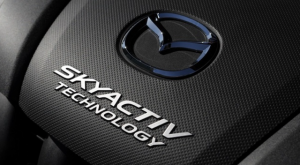
In a Stranger Things kind of way, these small, but turbocharged fours emulate the power output – and power curves – of V8s. It’s not necessary to rev them to get immediate action.
The power is right there – and right now.
Rev it if you want to. But not because you have to.
The mileage gains are equally impressive, especially in view of the performance uptick.
The previous-generation V6-equipped CX-9 had the appetite of a V8 SUV: 16 city, 22 highway rating. That is actually worse mileage than a V8-powered SUV like the current Chevy Tahoe (16 city, 23 highway).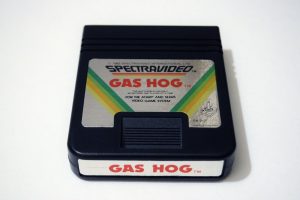
If the old CX had been a ripper – like the current twin-turbo V6 Explorer, for instance, which nails 60 in just over six seconds – the hole-in-the-gas-tank mileage could easily be forgiven.
But the old CX-9 was slower than the new one.
The new CX is not only quicker than before – and quicker than rivals like the V6-powered GMC Acadia and Hyundai Sante Fe – it is now among the most fuel-sippy large crossovers on the market: 22 city, 28 highway for the FWD version and 21 city, 28 MPG for one with AWD.
It’s a rabbit punch to Uncle’ Adam’s apple.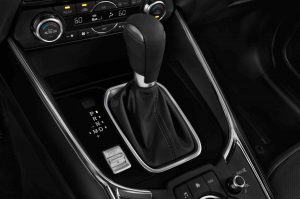
The CX-9 is blessed in another way, too. It doesn’t have a noisy continuously variable (CVT) automatic or an uber-elaborate automated manual or an automatic with eight or nine or ten speeds, either. The latter often constantly trying to figure out which gear to be in – or jumping forward – or back – several gears at a time.
And when they break down . . .
The CX-9 has a six-speed automatic. Plenty of gears for any situation and known to be long-haul reliable.
Mazda, like other car companies that traditionally specialize in sporty cars, has had to add crossovers to its model lineup because otherwise they’d lose customers who’d love to buy a Miata or Mazda6 but they’ve got kids now and need the extra seats – and space.
Ok, fine. But how to make a 17-foot (almost) seven-passenger family hauler feel less like a bus?
That’s where specializing in sporty cars comes in.
Try it, see for yourself.
You sit higher up – the CX-9 has about 8.8 inches of ground clearance – but the view from the driver’s seat is very Mazda6 as you look down that long – that sexy – hood.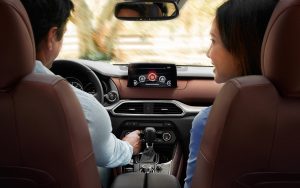
As in the 6, the suspension gives – but the body does not roll.
This is a Mazda trademark, across the model line.
And the steering feels very Miata. Weighted just right and as precise as the laser sight on my SigSauer.
Point and shoot.
Now add 310 ft.-lbs. of torque – about 50 percent more torque than produced by the same 2.5 liter engine (sans turbo) in the Mazda6 (185 ft.-lbs.) and a whole lot sooner – 2,000 RPM vs. 3,250 RPM in the 6 – and what have you got?
It’s actually just as quick as the Mazda6 – despite being about 800 pounds heavier. Gotta love the boost.
The CX-9 isn’t the all-out quickest in the class – that honor goes to the twin-turbo’d version of the Ford Explorer- but it has verve. The same intangible playfulness that defines all Mazda vehicles. You look forward to each drive – even in this biggest-of-all Mazdas.
Because it doesn’t feel it.
The newly standard G-Vectoring system helps maintain your line in the curves without the clumsy interventions of a stability control system. It discreetly modulates engine output to maintain balance and directional control – the same way a pro driver would by using his right foot and relying on years of track-day-developed skills – as opposed to reactive stability control systems that attempt to correct for mistakes already made by pumping the ABS.
The optional iActive all-wheel-drive system, meanwhile, is not just a traction-enhancement system. It selectively distributes engine power to correct for understeering tendencies during high speed cornering. This gives it an advantage over the 6 (and the Miata) which don’t offer AWD and which – though all kinds of fun to drive on a nice dry summer day – are out of their element when it snows.
The AWD system even anticipates the need to become active. If you turn on the windshield wipers, for instance, it knows it’s raining – and starts doing its thing, accordingly.
AT THE CURB
If the CX-9’s power/performance doesn’t get your motor running, its appearance just might
This is a good-looking thing – which is a rare thing in this class.
The others aren’t ugly. But they aren’t exactly sexy.
This one is.
Like the Mazda6 sedan – which is the stylistic inspiration for the CX. The front clips are similar and the two share the suggestive curvature that almost makes you want to run your fingers along the flanks. Whoops. I have to remember I’m not writing for Penthouse Forum.
Anyhow, the point is it looks really nice.
Part of the trick being to increase the wheelbase relative to the length. The current CX-9 is 199.4 inches long overall, with a 115.3 inch wheelbase. The previous-generation CX-9 was 200.6 inches but had a much shorter (113.2 inch) wheelbase. Pushing the axle center lines farther apart helps ride quality but has the additional perk of making the vehicle look higher-rent.
Like high-end sedans – all of which are long wheelbase things.
A long wheelbase also usually means a bit more usable interior space – especially if the overall length of the thing is about the same, as it is here.
However, the new CX – while it has about the same first and second row space as before – has a bit less space for cargo behind its third row: 14.4 cubic feet vs. 17.2 cubic feet previously. With both the second and third row down, the total space available is 71.2 cubic feet vs. 100.7 cubic feet before.
These cargo stats are par for the class.
The Ford Explorer has a bit more space (21 cubic feet behind its third row; 81.7 total) but it’s not a huge difference. The Hyundai Sante Fe has less space (13.5 cubic feet behind its third row). And the GMC Acadia only has 12.8 cubic feet behind its third row (and 79 cubic feet overall).
The Honda Pilot is one of the few that has a lot more space than all of these: 18.5 cubic feet behind its third row and 109.2 cubic feet overall. The Pilot is also – interestingly – only 194.5 inches long overall, or about half a foot shorter than the CX-9.
But, the Honda is about as sexy – and as fun – as Hillary Clinton.
Standard amenities include 18 inch wheels, three-zone climate control, surround-sound audio rig and a floating seven-inch LCD touchscreen as nice as any you’d find in a BMW.
Touring trims (and top-of-the-line Signature trims) add an even nicer eight-inch LCD screen. Both, however, have input mechanisms that could use some tweaking. It’s a sequence of events – rotate the knob to pigeonhole an item, then depress knob to select it. Other systems have easier-to-use one-touch/tap inputs.
Another small nit is the 12 V power point – which is located low on the passenger side of the center console, where it is almost impossible to see from the driver’s seat and hard to access, even by feel.
Grand Touring (and Signature) trims get 20 inch wheels, LED headlights with “adaptive” fog lights that track with the steering wheel in curves, side-glass privacy shades, a heated steering wheel, a fantastic 12 speaker Bose audio rig, a heads-up (HUD) display as well as adaptive cruise control, lane keep assist and collision mitigation/brake assist.
The Signature adds ultra-premium leather and real Rosewood interior trim, plus additional LED exterior lighting.
The government is pushing for a near-doubling of CAFE mandatory minimums – to 54.5 MPG on average by model year 2025. Even the brilliant engineers are Mazda won’t be able to make that cut – not without cutting some other thing.
Engines can’t get much smaller. And we have already reached the practical limits of turbocharging to compensate for displacement. This means – probably – the mass-adoption of hybrids or full-on electric drivetrains, unless the threatened CAFE doubling is put on hold or – better – repealed.
If not, cars will be much more fuel efficient, certainly. But they will also be much more expensive – unless a miracle is found by which hybrids and electrics can be made to cost about the same as gas-engined cars. 
The other option is for car companies to simply pass on the “gas guzzler” fines that will be levied for failing to meet the 54.5 MPG cut. Which will make cars cost that much more, making any “savings” on gasoline a moot point.
It’s probably pointless to do so, but now’s the time to call your Congress Cretin and tell it you think that the gas mileage your car delivers is none of their business – and to get out of the business of dictating mandatory minimum MPGs.
THE BOTTOM LINE
Mazda makes beautiful cars that drive beautifully – whether they carry two people or seven. . .
Got a question about cars – or anything else? Click on the “ask Eric” link and send ’em in!
If you like what you’ve found here, please consider supporting EPautos.
We depend on you to keep the wheels turning!
Our donate button is here.
If you prefer not to use PayPal, our mailing address is:
EPautos
721 Hummingbird Lane SE
Copper Hill, VA 24079
PS: EPautos magnets – they’re back! are free to those who send in $20 or more to support the site. Also, the eBook – free! – is available. Click here. Just enter you email in the box on the top of the main page and we’ll email you a copy instantly!


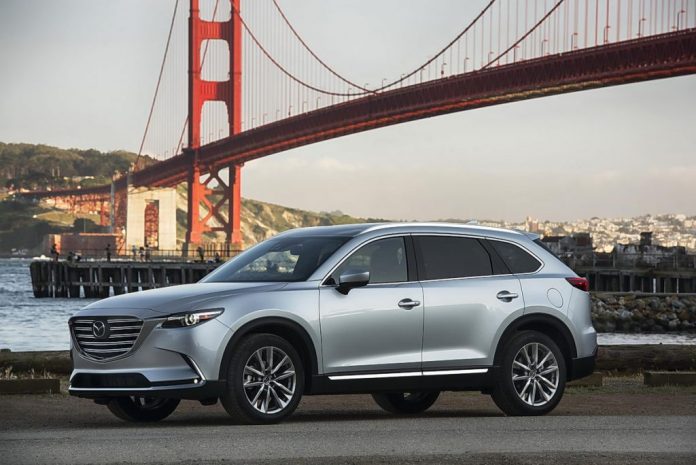

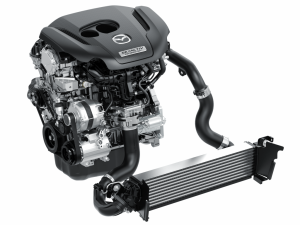
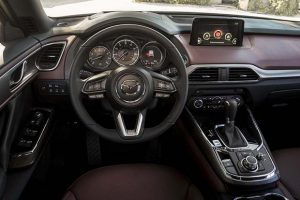
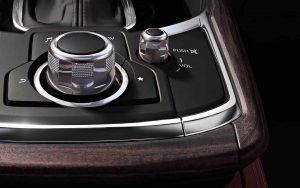

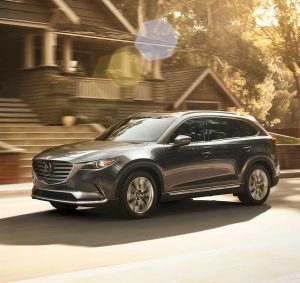
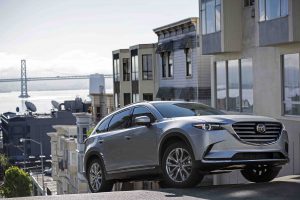





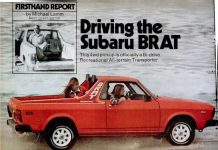


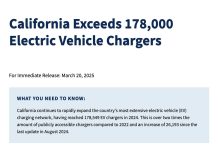
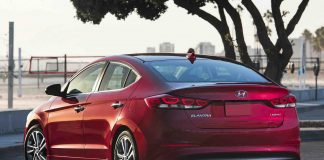
re this: “It doesn’t have a noisy continuously variable (CVT) automatic”
The CVT itself doesn’t make significant noise. The engine does, if you floor it and keep it there. The engine with a conventional automatic will make the same noise, though not continuously, since unlike a CVT, it is hard to keep the engine running at peak HP because of the drop off in revs after a shift.
That said, I would feel marginally less wary with a conventional until these CVTs have been on the road in large numbers for a decade or so, so we can tell if they hold up as well. I’ve got about 120K with the 5 speed auto on my Toyota, and it’s a pleasure to drive a car that is still low maintenance after all that driving.
Hi Jim,
Having driven many CVT-equipped new vehicles, I can attest that some are noisy. A high pitched turbine-like sound is produced. An underpowered engine adds to this cacophony. A properly programmed six-speed automatic is damned hard to beat; the CVT’s only advantage is a slight efficiency gain.
Hi Eric,
I hadn’t heard that turbine-like sound in the rental cars I drove with a CVT, but I drove them a lot gentler than a proficient automotive journalist would, since my GF scares easily in traffic. =D
I suspect that if a car company were to build two otherwise identical commuter cars with a 6 speed automatic versus a CVT, the CVT would be maybe a half second faster 0-60 because it gives you peak power right now and continuously, while the 6 speed would take a bit longer to get to peak power in first gear, and would be somewhat below the power peak most of the time after each shift.
Not that they would, since federal testing requirements stifle that sort of powertrain variety.
Hi Jim,
I wonder… it’d be interesting to compare. The CVT lacks the torque multiplication capabilities of a conventional automatic, so my bet would be that the car with the conventional automatic would be quicker. The CVT is more efficient for the reasons you cite and also because there’s less loss through the torque converter when it’s not in lock-up.
Hi Eric,
Not understanding why a CVT would not multiply torque. The functional difference is that a conventional automatic would have fixed number of gear ratios, for example 0.8:1, 1.0: 1, 1.2 : 1, while a CVT would have an essentially infinite number of gear ratios such as 0.8:1, 0.80001:1, 0.80002:1, and so on. They both do the same function – they both transmit HP — but one uses gears and the other uses belts and pullys to, say, double the torque while halving the rotational speed when either is at the 1:2 effective ratio.
Hi Jim,
I’m not sure if CVT’s have torque converters, but if they don’t, then that’s the reason you don’t get that torque multiplication.
Nice looking, and nice handling.
Engine power improved all the way from “barely adequate” to “perfectly adequate.” And unless they someday bring back the rotary (unlikely,) “adequate” is all that Mazda will ever give you.
This CX-9 has enough virtues to placate the Mazda faithful. But it won’t carve even one percent out of any competitors market share.
Hi Mike,
Probably, they aren’t looking to make conquests so much as not lose sales – so I agree with you. That said, were I in the market for a large crossover, I’d be interested in this one – but that’s because I’m interested in style and driving verve and utility begrudgingly!
It’s a measure of how much automotive engineering has advanced that 0-60 in 7.3 seconds is considered “adequate”. That was better or equal to what V8 Corvettes could do in that sucky period from the mid-70s to early 80s.
Hi Jim,
Agreed! My ’76 Trans-Am, with its huge 7.4 liter V8, was no quicker than this Mazda SUV with a four cylinder engine a third its size. That huge V8 only mad 200 hp – 50 less than the Mazda’s 2.5 liter four.
However…
The 455’s latent power was much greater. And the engine was much simpler, much less expensive to maintain and to modify.
I’m sorry, I’m really not liking these snooty, sharky, snorky, snarky looking front ends. Too cartoonish.
Hi Graves!
I agree with you, but this one’s not bad to my eye. Mazda is one of the few brands left standing that hasn’t given itself over to the ethos of uber macho or angry arachnid!
Pedestrian protection standards are to blame for those “Snoopy” front-ends.
Europe’s uncle in this case. Mostly anyway.